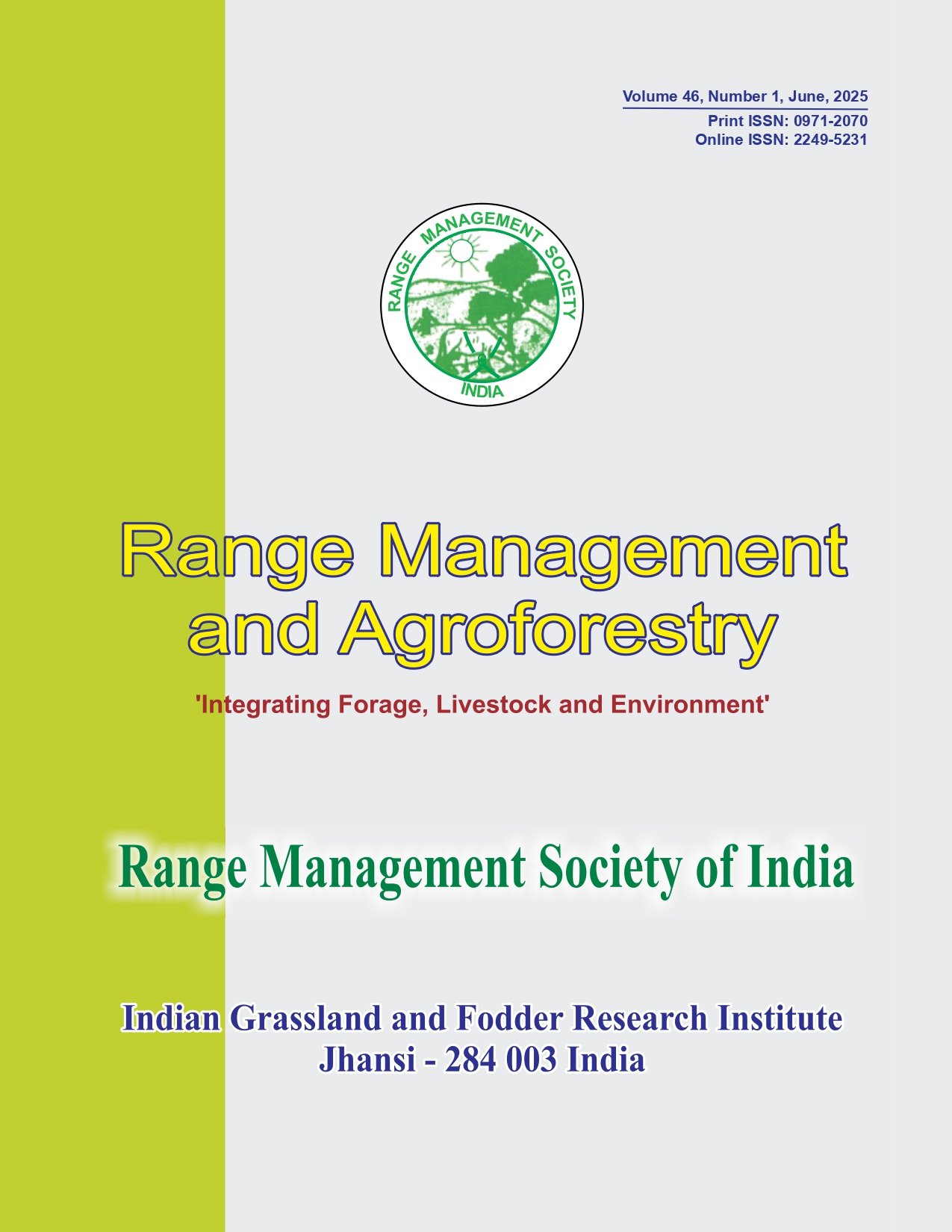Optimizing cowpea (Vigna unguiculata (L.) Walp) for economic prosperity: A strategic approach to amplify agricultural revenue in Karnataka
DOI:
https://doi.org/10.59515/rma.2025.v46.i1.20Keywords:
Area, Cowpea, Fodder, Profit, VegetableAbstract
Cowpea, a versatile crop, serves as both a nutritious vegetable and valuable fodder, excels in water-limited and soil-deficient environments, and aligns with ‘Sustainable Development Goals’ (SDGs) 2, 3, and 13. Despite Karnataka’s renowned output, cowpea production encounters obstacles and is deemed non-profitable. This study analyzes its growth, forecasts seed demand and resource-use-efficiency and evaluates economics in the region. Primary data was gathered from 125 farmers from five key districts through a field survey conducted in 2022. The study utilized the compound annual growth rate, cost-returns method, and Cobb-Douglass production function for data analysis. Findings reveal an annual declining trend of 3.26% in cowpea cultivation in Karnataka. The projected cultivated area for cowpeas in 2023-24 is 59,271 hectares, requiring a supply of 14,818 quintals of seeds over the specified period. The total cost of cultivation was estimated at Rs 39,510 per hectare. The study demonstrates that cowpea production yields promising net and gross returns per hectare (Rs 1,16,245 and Rs 1,55,755, respectively) with a benefit-cost ratio of 3.94, indicating a potential for doubling farm income. The investigation also demonstrated a noteworthy positive effect on cowpea income resulting from the utilization of resources during the production process, including chemicals, manures, fertilizers, and machinery. The main barriers to the cowpea industry are high labor costs and input expenses.
Downloads
Downloads
Published
How to Cite
Issue
Section
License
Copyright (c) 2025 N. Ashoka, Y. Ravi, S. Vishwanatha, M. M. Venkatesha

This work is licensed under a Creative Commons Attribution-ShareAlike 4.0 International License.







